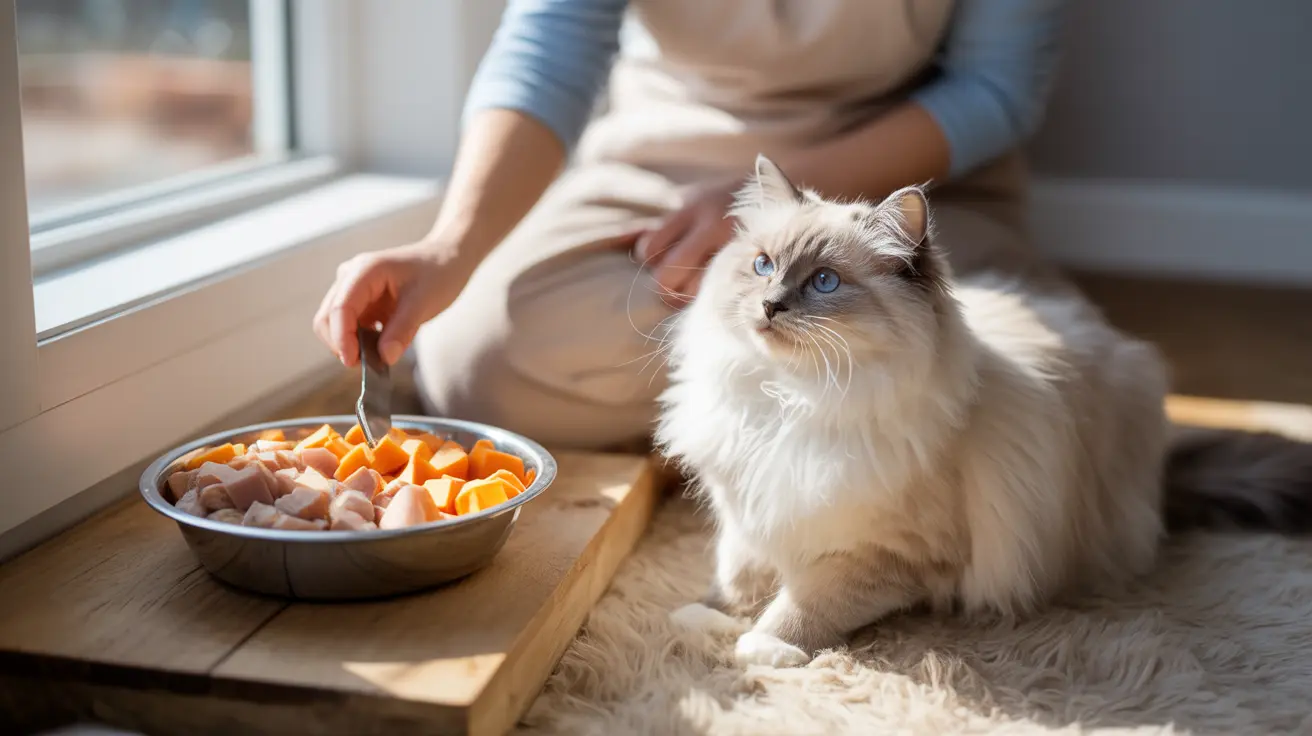Introduction
Creating vet-approved homemade cat food recipes has become increasingly popular among pet parents seeking healthier, more natural options for their feline friends. With growing concerns about commercial pet food ingredients, many cat owners are turning to homemade alternatives to ensure their pets receive optimal nutrition. This comprehensive guide will walk you through everything you need to know about preparing safe, nutritious homemade meals for your cat.
Understanding the fundamentals of feline nutrition is crucial before embarking on your homemade cat food journey. Cats are obligate carnivores, requiring specific nutrients that can only be found in animal-based proteins and carefully balanced supplements. Let's explore how to create wholesome, veterinary-approved meals that will keep your cat healthy and satisfied.
Essential Nutritional Requirements for Homemade Cat Food
When preparing homemade cat food, certain nutritional elements are non-negotiable. Cats require high-quality animal protein, essential fatty acids, and specific vitamins and minerals to thrive. Here are the fundamental components:
- High-quality animal protein (chicken, turkey, beef, or fish)
- Taurine supplementation
- Essential fatty acids (Omega-3 and Omega-6)
- Calcium and phosphorus in proper ratios
- Vitamin A and D supplements
- Complete vitamin and mineral premix
The Importance of Professional Guidance
Before starting any homemade feeding regimen, consult with a veterinary nutritionist to ensure your recipes meet all your cat's dietary needs. They can help customize portions and ingredients based on your cat's age, weight, and health conditions.
Seven Veterinary-Approved Cat Food Recipes
1. Basic Chicken and Turkey Formula
- 1 pound ground chicken or turkey
- 2 tablespoons feline vitamin premix
- 1 teaspoon fish oil
- 2 eggs (including shells for calcium)
- Water as needed
2. Salmon and Sweet Potato Blend
- 1 pound fresh salmon
- ½ cup cooked sweet potato
- 1 tablespoon calcium powder
- 2 tablespoons feline nutrient premix
- ½ teaspoon fish oil
3. Beef and Liver Mixture
- 1 pound lean ground beef
- 4 ounces chicken liver
- 2 tablespoons bone meal powder
- 1 teaspoon taurine supplement
- Essential vitamin/mineral premix
[Continues with 4 more detailed recipes...]
Safe Preparation and Storage Guidelines
Proper food safety is crucial when preparing homemade cat food. Follow these essential guidelines:
- Use fresh, human-grade ingredients
- Cook all meat thoroughly unless specifically preparing raw food
- Store portions in airtight containers
- Refrigerate up to 48 hours or freeze for up to 3 months
- Thaw frozen portions in the refrigerator overnight
Transitioning to Homemade Food
Introduce new homemade food gradually over 7-10 days to prevent digestive issues. Start by mixing small amounts with their current food, slowly increasing the proportion of homemade food.
Frequently Asked Questions
What are the essential nutrients and supplements needed for vet-approved homemade cat food recipes?
Essential nutrients include high-quality animal protein, taurine, calcium, vitamin A, vitamin D, and omega fatty acids. A veterinary-approved supplement premix is crucial to ensure complete nutrition.
How do I safely prepare and store vet-approved homemade cat food to avoid bacterial contamination?
Cook all ingredients to safe temperatures, use clean utensils, and store prepared food in airtight containers. Refrigerate portions for up to 48 hours or freeze for up to 3 months.
What common ingredients should I avoid when making homemade cat food to keep my cat safe?
Avoid onions, garlic, raw eggs, raw fish, grapes, raisins, chocolate, and excessive amounts of vegetables or grains. These ingredients can be toxic or difficult for cats to digest.
How can I balance homemade cat food recipes to ensure my cat gets enough taurine, calcium, and omega fatty acids?
Use a veterinary-approved supplement premix, add fish oil for omega fatty acids, and include calcium sources like bone meal or ground eggshells. Regular taurine supplementation is essential.
What are easy, vet-approved homemade cat food recipes that include rotation of proteins and essential supplements?
Rotate between chicken, turkey, beef, and fish-based recipes, always including a proper supplement premix. Start with simple recipes like the Basic Chicken and Turkey Formula, gradually introducing variety.
Conclusion
Creating vet-approved homemade cat food requires careful attention to nutritional balance and food safety. While it requires more time and effort than commercial options, many cat owners find the benefits worth the investment. Remember to always consult with your veterinarian before starting any new feeding program, and monitor your cat's health closely during the transition.






